
Dr. Hugh Macdonald
Senior Research Associate
School of Economic and Social Studies University of East Anglia, UK
Visting Scholar
BESA Centre for Strategic Studies Bar Ilan University, Israel
27 April, 1999 (first draft)
17 May, 1999 (second draft)
(c) The intellectual property rights of the author are asserted
Introduction
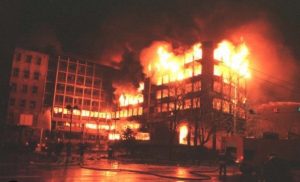
On 24 March 1999 the North Atlantic Treaty Organisation (NATO) launched military attacks from the air against a sovereign member of the United Nations (UN), the Federal Republic of Yugoslavia (FRY). NATO’s stated aims amounted to imposing on FRY, and on Kosovo Albanian groups including the Kosovo Liberation Army (KLA), the terms of Accords elaborated in international meetings at Rambouillet and Paris; and preventing military and other forces of the FRY, or KLA, from acting violently against the population of Kosovo.[IISS 1999c]

According to the Serbs, meeting these aims would detach Kosovo from Serbia. After the bombing commenced, FRY formally declared war, making this the first new inter-state war in Europe since Hitler’s invasion of Poland in September 1939.
International lawyers disagree over whether there may exist a presumptive right of forcible intervention in humanitarian crises. The balance of opinion is that some new norm may be emergent. But there are no clear-cut cases that can be demonstrated. More importantly, there is neither a textual basis, nor a consensus in the international community, about what states mounting a forcible intervention are permitted to do.
Most opinion is they are prohibited from doing much beyond bringing assistance and perhaps forcing an end to violent oppression. There is certainly no right in international law to proceed, even under UN authorisation, from a forcible humanitarian intervention to altering the political, social, legal or territorial basis of a sovereign state. [Guicherd, 1999: 24, 28-9]
Some jurists and political scientists contend that a political doctrine of recognition (and dis-recognition), together with radical reinterpretation of the UN Charter, permits ‘self defence’ to be extended by a great power such as the US to forcibly intervening in the territories of states, while remaining in conformity with general principles of international law. This western version of a ‘doctrine of limited sovereignty’, once known as the Brezhnev doctrine, may spread in consequence of the Kosovo war.
The UN Charter outlaws war and restricts the legal right of using force. States can use force without reference to the UN only in direct defence against attack, or in collective defence against an aggressor. These permissions are in a category involving the forcible crossing of established and recognised international borders by aggressors. Most interpretations believe such permissions cannot provide legal cover for forcible interventions to rectify violations of human rights or humanitarian law.
Where there exists a threat to international peace and stability (Chapter VII), or when a regional organisation such as NATO seeks to act in pursuit of collective security aims (Chapter VIII), the requirement is that a Resolution of the Security Council must be sought, and a mandate to use force must be issued by it.
Law and morality may conflict. Arguments appealing to moral principles claim that the human rights of ‘Kosovars’ override the Charter’s strict prohibitions. Their legal character relies on finding some sufficient combination of new norms derived from ‘universal human law’ (erga omnes), ‘secular natural law’ (jus cogens), and ‘relevant cases’ such as assistance provided to the Kurds in northern Iraq in 1991.[Guicherd, 1999; Roberts, 1999]

According to protagonists of force the failure of diplomacy prior to NATO’s action ‘left no alternative’. It was claimed that FRY had already embarked on ethnic cleansing, or even genocide, prior to 24 March 1999. Another argument cited by NATO was that the situation in Kosovo constituted ‘the greatest refugee crisis in Europe since the closing weeks of the Second World War’. Some NATO leaders, notably in Britain, contended that NATO’s action meets the definition of a just war. Some claimed that NATO would indict leading figures in FRY for war crimes, depose the ‘dictator’ Slobodan Milosevic, and bring Kosovo under the ‘protection‘ of the international community.[Klein, 1999; Neville-Jones, 1999]
These claims indicate a moral fervour among European governments and bureaucracies favouring some ‘new internationalism’, which is liable to grow irrespective of the outcome of the war.[Blair 1999]
Yet as the war dragged on, failing to dent Serbian obduracy or to provide effective help to the Albanians, it became clear that there had been little initial unity even among leading NATO governments; and that many alliance countries had clear legal, moral and military reservations about the use of force.[Guicherd 1999: 26]

Absence of consensus was obscured by NATO’s self-confident public rhetoric. As the difficulty of attaining its political goals increased, and large new security challenges appeared in the Balkans and in the wider international order, the political unity of the alliance became strained. Even so, achieving military success was given as the justification for continuing intensive military actions, most of which had no direct impact on the situation in Kosovo. Each daily press briefing by spokesmen for NATO Secretary-General Javier Solana included the statement that, ‘This has been our best day yet’.

‘Success’ was measured in missions flown, bomb-loads, and targets struck, rather than in measurable attainment of the alliance’s objectives. The Washington summit held in late April to mark the fiftieth anniversary of the Treaty’s signature concluded that sustaining the credibility of NATO through reasserting its original war aims had become an aim above all others.[IISS, 1999a: —] The contention that NATO’s course of action would fail to attain its aims, and would have unintended consequences, was advanced by many experts, including regional specialists on Yugoslavia, Serbia and Albania; and civilian strategists. At the outset these views were submerged by NATO’s dominance of the electronic and print media. Gradually, however, it emerged that the action had been criticised by many NATO insiders, and some of the Chiefs of Staff in Washington and London.
It is thus important to examine NATO’s new internationalism.
Antecedents of the crisis
Kosovo is a province of Serbia, which exercises political, legal and other authority within the framework of FRY. This position was codified in the Treaty of Paris following the Dayton Agreement of 1995. Based on that, Serbia has contended that the situation in Kosovo is an ‘internal’ matter.
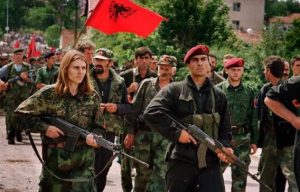
But Kosovo’s population is over 80% Albanian. Its provincial autonomy was rescinded in 1989. Its internal institutions are under suspension by Emergency Powers. A democratic opposition functions under duress. A widespread armed rebellion is being prosecuted by the KLA. The international community is legitimately interested in the situation in the province, and in a negotiated resolution of the conflict. [Binder, 1987; IISS, 1998]
This argument could be widened somewhat. A movement for Kosovo independence from the former Yugoslavia grew in the 1980s. A declaration of Kosovo’s independence was made in 1991. As Yugoslavia disintegrated, declarations of independence made by elected Republic-level bodies met with international support and recognition (Slovenia, Croatia, Serbia, Montenegro, FYROM, Bosnia-Hercegovina). Those made by sub-republican minorities were suppressed (Krajina Serbs, Bosnian Serbs, Bosnian Croats, Kosovo Albanians, Serbs and Albanians in FYROM). This fuelled warfare in Croatia and Bosnia for five years. In FYROM civil war was obviated through a UN peacekeeping force which had the support of surrounding states, including Serbia.
By the end of the wars in Bosnia and Croatia the international community had learnt to include rather than exclude the political aspirations of ethnic minorities. Extensive planning was done for the inclusion of Albania in a general ‘Balkans recovery plan’. Cognisance was taken of minorities’ potential for destabilisation. President Milosevic of Serbia (now President of FRY) acknowledged the problem of Kosovo as early as 1992. The role which a European security organisation (OSCE) might play in conjunction with economic reconstruction was discussed. [Judah, 1999: 16; IISS, 1999a: 126; Klein, 1999: 8]

Establishment of a new provincial or Republican status for Kosovo was accepted by the main democratic groups in Kosovo, led by Ibrahim Rugova. This initiated a slow but significant dialogue between the Albanians and Belgrade.
What underlay success at Dayton was not the efficacy of NATO air power but quiet diplomacy in previous years that had teased out from the two principal Balkan leaders, Tudjman and Milosevic, the terms on which a political compromise between them could be built. There were also substantial British and French forces in Bosnia. But US prejudices favouring air warfare, and anxiety to restructure and find new roles for NATO, obscured that.
Through the Dayton process a US preference for giving massive military support to a ‘peace enforcement’ presence (SFOR/IFOR) in Bosnia, overtook the thinking of western governments. While the dialogue in Kosovo continued, effective international support for it was lost. The work of UN peacekeepers was scorned.[Williams, 1999b]
This led to intellectual, institutional and moral confusion when it was applied to Kosovo. Quiet diplomacy was discounted. Coercive air power was talked up. General economic priorities were subjected to a focus on ‘the special case’. The UN was disregarded. NATO, invented as Machina ex Deo, became Deus ex machina.
With the collapse of Albania in 1997 the Kosovo situation deteriorated rapidly. The KLA, sustained by arms and equipment pouring in from Croatia, Albania and other European countries, displaced the democratic Kosovo movement and gained increasing attention from western governments.[Almond 1999; Judah 1999: 13]
In response, Serbia determined to crush the independence movement if the Kosovo Albanians sought secession through rebellion. This produced the classic recipe for a vicious Balkan civil war: on one side a secessionist movement supported from outside by regional patrons (Croatia’s ambitions in Bosnia; Albania’s ‘mission’ to support national self-determination); on the other a dictatorial, nationalistic regime perceiving its future turning on that of an embattled province.[IISS 1999a: 122-3] Western countries possessed the information to analyse this situation.
But the direction of strategy was shaped by other considerations. The US and EU preferred, as the civil war escalated, to insist that the military activities of both sides should be halted. This was an impossible demand, though both sides paid lip service to it. Arguably, indeed, the Serbian side had the stronger interest in containing the conflict, though it also possessed formidable military options. The most respected academic institute in the field of security studies concluded, ‘Contrary to common assumptions in the west, Milosevic never had any intention of starting a war in Kosovo’.[IISS 1999a: 119]
Military-strategic restraint by FRY was never recognised as such. There was no open diplomatic recognition that the KLA could only lose by an effective end to fighting, and therefore would not cease fire. Nor was there any questioning that, with US agencies and personnel managing much of the government of Albania, and advising the KLA, it was self-contradictory to argue that the US was an interested party in search of disinterested conflict resolution.

This was reinforced at the level of personalities and their influences on decision-making. The social-democratic values of some European leaders clearly entered the equation. During the Bosnian civil war Robin Cook pressed the government of the day to ‘bomb the Serbs’. As Foreign Secretary his ‘moral foreign policy for Britain’ led to problematic diplomatic interventions in several parts of the world.

US Secretary of State Madeleine Albright held a particular antipathy towards Milosevic.

NATO SACEUR General Wesley Clark advocated ‘Bosnia-type’ peace enforcement missions through NATO, and judged that Milosevic would ‘cave in’ once bombs fell on Belgrade.
Another sub-text underlying European security issues is EU integration. Its current agenda is best observed through rapid defence economic integration, and the military policy coordination protocol signed in December 1998 by Britain and France. The EU’s lagging requirement for more effective Common Foreign and Security Policy (CFSP) might be answered by combining humanitarian issues, which lent themselves to the military capabilities and interests of the EU countries; defence and intelligence coordination, which would permit a rapid evolution beyond mere peacekeeping tasks; and US backing, implemented through NATO, sustained by rapprochement with France, and sanctioned by the Council of Ministers appointing a ‘Mr Europe’. The EU might at last achieve military-political unity of action, which had been heralded (in the Balkans at least) since 1991, when Jacques Poos ill-fatedly proclaimed that ‘the moment of Europe has arrived’.[IISS 1999a: 37]
Yet the behaviour of the EU in the Kosovo crisis resembled humpty-dumpty with schizophrenia: a strange, fragile creature climbing onto and falling off the Unity Wall, while behaving as though it was of no consequence anyhow. Such European illness was evident in pre-war diplomacy; in including but largely ignoring the OSCE and Russia; in following but resenting American initiatives in crisis management. Thus, Europe’s leading Foreign Ministers helped manoeuvre NATO into threatening war, while lacking a plan to employ their armies. Even during NATO’s Washington summit, Britain and France spectacularly failed to unite in a call for ground forces to enter the war.
The diplomacy of coercion
The Kosovo crisis began when in January and March 1998 Serbian Special Police (MUP) and FRY Army units, charged with protecting territorial unity, entered the province to oppose rapidly spreading military operations by the KLA. The UN Security Council passed UNSCR 1160 (31 March 1998), which imposed an arms embargo and enjoined the parties to the conflict to negotiate on ‘political status issues’.
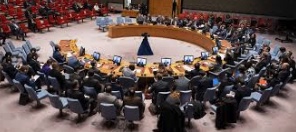
This UNSCR was drawn up under Chapter VII of the Charter, concerning threats to international peace and stability. There was no provision for forcible measures. Subsequent UNSCR 1199 and UNSCR 1206 also reserved any mandate for the use of force to the Security Council, which indicated that it remained seized of the situation. This created an unsurpassable legal presumption that only the UN could exercise the right to use force.[Guicherd 1999; 23]
An election held in March 1998 among the Albanian population of Kosovo overwhelmingly confirmed Ibrahim Rugova as ‘president elect’, and his movement, the Democratic League of Kosovo (LDK), as the people’s choice. Rugova had long led the movement of Albanian dialogue with Belgrade. But his position was disputed by the KLA.
In the spring of 1998 the KLA managed to capture the Drenica valley in south-western Kosovo. This provided an operational base area, running north-west from near the main city of Prizren along the Drin river to the town of Djakovica, and then northwards in the direction of the historic Serbian city of Pec. From here, the KLA could mount operations into the rest of the province, and threaten defensively to divide it if Prizren and Pec were seized or blockaded.[IISS 1999b]
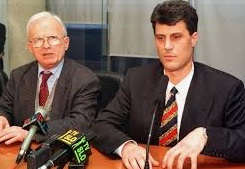
This boosted the political power of KLA leaders, notably its Chief of Staff Adem Demaci and later, as the Rambouillet talks approached, Hashim Thaci, leader of the Popular Movement for Kosovo (LPK). The LPK is an armed faction recognised and supported by the Albanian government of President Pandeli Majko, and by the Government of Croatia.[IISS 1999b]
These overlapping developments unleashed a struggle for power and legitimacy among Albanian groups. Factions of the KLA used terror tactics against Albanian civilians. Their rationale was to radicalise Kosovo’s Albanians. Rugova’s movement also possessed a paramilitary element, the Armed Forces of the Republic of Kosovo (FARK). There was internecine fighting between KLA/LPK and FARK, whose ‘Minister of Defence’, Ahmed Krasniqi, was assassinated. Sali Berisha, former president of Albania and supporter of Rugova, stated that at the beginning of NATO’s air campaign the KLA murdered Rugova’s deputy, Fehmi Agani. NATO unequivocally blamed the Serbs for this atrocity.[Times 1999b]
By midsummer 1998 the FRY Army was ready to mount a major offensive against the KLA. Assisted by MUP forces and civilian militias, it swept through large areas of the province where guerrilla forces were operating. Estimates of the number of citizens displaced from their homes range as high as 250,000.[IISS 1999b]
The Security Council resumed consideration of the crisis. Strong pressures to cease brutality and violations of human were exerted. But there was no consensus favouring coercive force, because it was recognised that the KLA was being armed and supported by outside powers, including European countries; and that FRY was the legal government in Kosovo.
These objections cannot be dismissed. Some 2,000 people were killed in Kosovo during 1998. This compares with, for instance, several hundred during the worst years of the emergency faced by Britain in Northern Ireland. Other comparisons need to be made. One concerns a NATO member, Turkey, where in suppressing Kurdish rebellions the government periodically moves hundreds of thousands of Kurdish civilians by force. Another concerns Colombia, closely allied to the US, where up to 300,000 civilians are currently displaced, and thousands are killed every year. Kosovo’s civil war has not approached the violence of Algeria, the Congo, Sierra Leone, Afghanistan, or many other tragic conflicts.[IISS, 1999a]

At the same time, civil war in Kosovo had been widely predicted. Doing nothing was not an option. Over the next six months, the US and EU negotiated directly with Belgrade. Leading mediators included Richard Holbrooke, conductor of the pre-Dayton negotiations; Christopher Hill, US Ambassador to FYROM and subsequently Head of the OSCE Verification Mission (OSCE-KVM); European Foreign Ministers Robin Cook (Britain) and Hubert Vedrine (France); EU Presidency troikas; and SACEUR Wesley Clark. There were constructive developments, though diplomacy proved excruciatingly slow.
Holbrooke brought Milosevic and Rugova together in March 1998. This advanced Serbian acceptance of substantial renewed autonomy, or even republican status, for Kosovo. The American negotiator’s standing with the FRY President remained good, though in his last-minute visit to Belgrade on 23 March 1999 he could not prevail on him to accept the Rambouillet Accords.

Hill was no diplomat, and this limited his effectiveness, but his planning was sophisticated. He worked with Holbrooke to draft a plan for Kosovo ‘interim autonomy’. This offered the highest common factor of agreement among all parties. Its proposals cleaved to the Treaty of Paris, which reaffirmed the territorial unity of FRY. Kosovo would receive a ‘substantial autonomy’, in all practical terms the internal institutions of a state. But it would continue to be tied to FRY. At the end of an ‘interim period’ there would be ‘a mechanism’ for assessing the effectiveness of these arrangements. Working arrangements were spelt out in a number of normative principles to be accepted by all parties.
The plan also provided continuing UN, OSCE and EU mediation; a ‘peace enforcement’ presence large enough to vitiate the sovereignty of FRY/Serbia over Kosovo; the disarmament to low levels of FRY military forces and border guards; withdrawal of Serbian police; and ‘transformation’ of the disarmed KLA into a new provincial police force.[Weller, 1999]
The most hopeful time came in October 1998. First, FRY issued a ‘Statement of principles for a political settlement’. This was an outcome of the Holbrooke negotiations. FRY acknowledged that Kosovo should be subject to international mediation. The FRY Army would withdraw. There would be new elections in the province. The OSCE would monitor these arrangements. NATO would have an ‘open skies’ capacity to observe and report on emergency situations that might arise.
Meanwhile attacks by the KLA on police stations and military posts continued; as did FRY and MUP actions against villages penetrated by, or used as bases for, KLA forces. In a pattern so familiar from the past, the cessation of hostilities agreement was overtaken by events on the ground. The real problems of crisis management continued to lie ‘out there’.
Later in the month, following Security Council censure, visits by Cook, Clark and others, and agreement within NATO to issue an ‘Activation Order’ for air strikes, the Serbs promised to reduce FRY Army and MUP levels in Kosovo below the level of early 1998, and ‘end the excessive and disproportionate use of force’.[Weller 1999: 219; IISS 1999a: 120]
At the same time the KLA and other Albanian military formations were enjoined to ‘cease hostilities and provocative actions, including hostage taking’. NATO insisted that, ‘All parties must end violence and pursue their goals by peaceful means only’. NATO’s Activation Order was ‘left open’.
The Hill Plan did not provide an easily agreed solution among the conflicting parties. Rather, it offered a broad avenue for creative diplomacy. As with previous armed confrontations in Croatia and Bosnia, the sine qua non for effective inter-mediation was a monitored ceasefire. The OSCE under Hill was to do this. A start was made, but was far too slow. Between October 1998 and March 1999 numbers of deployed OSCE-KVM monitors barely reached 50% of their planned total of 2,000, the minimum considered necessary to monitor the province. Hence the US and EU bear considerable responsibility for failing to effectively implement the October 1998 terms of agreement with Belgrade.[OSCE 1999a]
It has been alleged that Milosevic never intended to implement the October 1998 Agreements. This is almost certainly not so. In any case it grossly over-simplifies several issues that demand careful analysis.[IISS 1999a:119]
Holbrooke’s diplomacy was jeapordised by the rise of the KLA. But the KLA was being trained by US ‘contractors’ with close links to the Pentagon. This graphically illustrates two major problem for western societies. The ‘privatised’ conduct of important components of the external relations of key western countries may run counter to public interests. Secondly, in any case this creates wide scope for significant inter-agency disputes.
Throughout the crisis the Europeans sought to coordinate their views of what ought to be done. With a sense of American backing the Foreign Ministers, particularly Cook, talked like a great power in front of the television cameras. This may have been intended to solidify European opinion behind taking a more robust stance in international affairs; but it also sent conflicting messages to Belgrade, the KLA, and to the American public, which approves of Europe doing more, but not of greater US involvement.
The Europeans’ act was vulnerable. There was no independent capacity to coerce Milosevic into doing their bidding; they did not, on the whole, wish to support the KLA, which has dangerous links to crime and drugs; and they were not in any case ready to envisage a division of labour in which they would provide all of the ground forces to monitor the Hill Plan, while the US ran air surveillance and enforcement ‘backup’.
Clark, a senior General rapidly promoted with the favour of Congress, lacked experience at the very highest levels of command. In his public utterances he seemed unsure of whether to speak chiefly to the Congress, or to the Europeans. In any case he profoundly misread Milosevic’s reluctance to resort to a military solution in defiance of NATO. In October 1998 Milosevic backed off the risk of air strikes because under the Hill Plan the KLA were faced with the delegitimation of their armed insurrection. In March 1999 there was no such payoff, which reflected Clark’s determined but unscientific belief that ‘bullies blink before moral force’.
Most important, Russia’s economic meltdown in the late summer of 1998 had ramifications for the Balkans uncannily like those of its complete political collapse in 1991. In both contexts the western powers were presented with ‘windows of opportunity’ to take much bigger risks than otherwise would have been advisable. In this crisis complaints emerged that by invoking OSCE rather than NATO as the primary peace monitor, Holbrooke had ‘cut the wrong deal with Milosevic’.

Advice from the best Russia expert, Deputy Secretary of State Strobe Talbott, was sidelined. Secretary of State Albright, in concert with the most important Europeans, chose a far more hawkish policy.[The Times, 1999c]

In January 1999 a purported massacre of 45 civilian men at the village of Racak was attributed by OSCE Ambassador William Walker and the US State Department to MUP forces. Serbian authorities claimed that the dead had been KLA soldiers, killed in a firefight with FRY forces. Subsequently, French press sources produced plausible evidence for this, and contended that a scene of massacre had been ‘set up’ for Ambassador Walker. Walker’s experience as US Ambassador in El Salvador prepared him to act adroitly in such circumstances. Then, faced with the massacre of Jesuit priests by government paramilitaries, he explained that ‘management control problems can exist in these kinds of situation’. Now, he reached for the first satellite link and denounced Serb mass ethnic cleansing. Whatever the truth, this diplomatic ploy drew massive media attention.
The immediate consequence was that US Secretary of State Madeleine Albright met with Russian Foreign Minister Igor Ivanov on 26 January. Their joint statement called on Belgrade to implement the October ‘Statement of principles’; and promised that the US and Russia would ‘coordinate support for a resolution of the crisis’. The following day the US announced it would ‘combine diplomacy with a credible threat of force’, and that NATO would implement this approach.
These US-Russian negotiations paved the way for the US and EU to act towards FRY and the KLA as if this was ‘the west’s backyard’. This seemed analogous to the understanding Russia had received from the west over its forcible interventions in Chechnya, Ukraine, Tajikistan and other ‘hot spots’ in its ‘near abroad’.
So far, the UN had been directly involved. A Report to the Secretary-General on 30 January 1999, under the terms of UNSCRs 1160, 1199 and 1203, noted the widening of FRY Army attacks on villages used by the KLA for its operations, as well as KLA responsibility for widening the war. The outcome was a ‘presidential statement’ by the Presidency pro tem of the Security Council. With further evidence accumulated by the western powers following the Racak ‘massacre’, this could have constituted the basis for an application by the US, EU and NATO to use main force pursuant to Chapter VII.
But clearly, too, the Security Council still did not share the ‘spin’ on Kosovo advanced by the US and Britain, which ‘led the way’ on behalf of the EU. Hence an application for a mandate would have been subject to intense scrutiny. That effort was not made, and must cast doubt on the prima facie evidence of genocide later alleged by NATO. From this point on in the crisis the role of the UN diminished to passivity.
Indeed reports from OSCE-KVM on ceasefire violations in the province suggested a decline rather than an increase in violence against civilians from terrorist groups. OSCE-KVM also recorded a decline in the number of attacks on police and military units. The background to this was the increasing success of the FRY Army in rolling back the gains made by the KLA.[OSCE 1998-99] Intelligence from the battlefield saw the continuing buildup of FRY forces.
This suggested that KLA military actions had extended beyond the culminating point of victory. A qualitatively different war, much more difficult to stop, was likely at any time. Through this fog of war and diplomacy the NATO powers persuaded themselves that their best choice lay in a strictly time-limited diplomatic conference which would provide the context for a de facto ultimatum to Milosevic, and a means of uniting the fissiparious Albanian factions.

Management of the burgeoning crisis was overseen by the Contact Group of six countries, which had been formed during the civil war in Bosnia. The period of conference diplomacy preceding the use of force by NATO, the Rambouillet talks (6-23 February 1999) and Paris conference (15-19 March1999) were chaired by Cook and Vedrine. Substantive negotiations with the delegates of FRY/Serbia and the Kosovo Albanians were conducted by three Contact Group Ambassadors from the US, EU and Russian Federation, who drew on legal, political and military advisors. Proceedings were reported to the EU, OSCE, NATO, and other countries of the Contact Group.[Weller 1999]
The talks commenced with a modified version of the Hill Plan being put before both sides, together with an enlarged list of normative principles for a negotiated settlement. No detailed plan for a NATO military deployment was made available to either side until the penultimate day; but the US and EU insisted that NATO should be the sole instrument of peace enforcement.
During the talks the most crucial aspect of the initial Hill Plan, the re-affirmation of FRY/Serbian sovereignty, was left behind. The ‘mechanism for consultation’ on interim autonomy was modified to include a referendum.
If this included an option for independent statehood, its outcome would be a foregone conclusion. Moreover the Military Agreement, revealed at the end of the talks, proposed giving NATO forces unfettered legal access to all parts of the territory of FRY, while permitting FRY military units in Kosovo light weapons only. Mediation by ‘the international community’ was now about coercing the Serbs to sign an agreement for autonomy that would probably result in a loss of territorial unity. [Weller 1999: 221-34]
Although neither Serbs or Albanians found the proposed settlement satisfactory, the Albanian side as a whole would have been clear ‘winners’. The problem lay with the KLA. In a peaceful transition it would lose to the democratic groups backing Rugova’s movement. Having come so close to dominating its Albanian opponents, and with NATO so close to using force against FRY, the KLA had more to gain from obduracy. Hence the KLA refused to sign the Rambouillet Accords.
The position for the Serbs at the end of Rambouillet was clearly worse. The FRY had appeared at the talks claiming to represent all ethnic groups in Kosovo. This claim was rejected. No face-to-face talks were permitted between ‘Serb’ and ‘Albanian’ delegations. This exacerbated tensions, and led to competition for the favours of the western ‘power brokers’.
In the intervening period ‘for reflection’ following Rambouillet, the KLA was brought into compliance, partly because the situation on the ground in Kosovo continued to deteriorate. But the most important factor was diplomatic pressure. This may have included a promise by Madeleine Albright to ‘go firm’ on a promise of independent statehood for Kosovo. Hence NATO, despite assertions to the contrary, was being used to alter the frontiers of a sovereign state. This may not have been the aim of the alliance; but it was the main aim of NATO’s leading powers.[Weller, 1999: 232]
The Serbs’ resistance to NATO strengthened: following detailed scrutiny of the military requirements demanded by NATO, they deemed the Rambouillet Accords incompatible with the sovereignty and territorial unity of FRY. Preparations were advanced for a much greater military assault on the KLA and its allies.
The ensuing Paris conference was an ultimatum in the form of a signing ceremony. While the Albanians signed, and had no alternative, the Serbs refused. The Russian representative of the Contact Group refused to witness the Albanian signature, on the grounds that this was exacted under duress and thus did not constitute a valid diplomatic instrument. The OSCE-KVM monitoring mission was ordered to withdraw from Kosovo on 19 March, and Ambassador Hill’s leaving remarks to his staff made clear that NATO bombing would follow.[Weller 1999: 234-5; OSCE 1999c]
The Co-Chairmen of the conference, Cook and Vedrine, warned FRY not to initiate the wider use of force in Kosovo. Their closing statement was issued to NATO, the Contact Group, the EU and OSCE Headquarters. It did not refer to the UN, and made no formal report to the Security Council or to the Secretary General.[US 1999a] Holbrooke flew to Belgrade but failed to persuade Milosevic from attempting to crush resistance in Kosovo before NATO air power could decisively intervene. Milosevic accused the NATO countries of ‘failing to advance proposals that a sovereign state could accept’.
The features of coercive diplomacy can now be summarised.
Civil war was not brought to a terminating point through either conciliation or threats. Serious progress towards a negotiated outcome was made by Holbrooke, Hill and EU Foreign Ministers, notably by reinforcing the dialogue between the democratic Albanians and Belgrade. The KLA, supported by various countries, made all-out efforts to undermine this peace process. The balance of forces swung first in favour of its forces, then towards the legal government.
Military methods employed by FRY involved grave violations of humanitarian law and human rights. Unequivocal condemnation and threats by NATO wrung eventual acknowledgement of ‘disproportionate force’ from Belgrade. But no concessions were made on sovereignty or foreign forces. Belgrade invited comparisons with other internal wars in Turkey and elsewhere. At the UN there was no consensus on force.
With tacit consent available from weak, dependent Russia, following its last economic meltdown, the US, EU and NATO chose to experiment with a new strategy for transatlantic cooperation. Between October 1998 and March 1999 the allies determined to ‘make an example’ of Milosevic. The Holbrooke negotiating framework and Hill Plan were unilaterally transformed to impose a mechanism for Kosovo independence through a NATO occupation force. It was predictable that the FRY would not find this a negotiable outcome. The US and EU intentionally bypassed the UN. Their unilateralism strained Russian accommodation of the Contact Group. Milosevic, whatever had been predicted by NATO, refused to accept the west’s ultimatum.
Force was employed. NATO gambled on escalation winning either a humiliating climbdown by Milosevic, or a rapid victory that would directly assist the Albanians in Kosovo.
Effects of the resort to force majeur
A diplomatic correspondent of The Guardian records that his Albanian hosts in Pristina opened bottles of wine and exchanged toasts on the night of 24 March, when NATO bombs began falling in and around the city.[Steele 1999]
When use of air power failed to rapidly achieve its aim of forcing a sovereign state to cede sovereign control over a significant part of its territorial unity, NATO found itself outwith a sound and prudent interpretation of international law. This made it inordinately difficult to broaden the war in several dimensions, operate effective economic sanctions, maintain unity over strategic policy among the allies, sustain public support, or preserve acceptance of the continuing military action bymembers of the Security Council.
NATO’s de facto bypassing of the UN strengthens the argument that states may resort to the use of force outside the constraints of the Charter. It establishes a precedent other great powers will use in future, conceivably to the great detriment of western security.
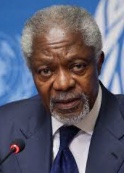
The muted remonstrances and diffident actions of Secretary General Kofi Annan made him appear a catspaw of NATO’s will. None the less, after some days he visited Brussels: a brief statement pointedly failed to endorse NATO’s actions, and suggested that the matter of Kosovo would ‘shortly’ need to be brought back to the Security Council. Following more than two months of bombing this had not happened. Proceedings at Rambouillet and Paris infringed other accepted standards of diplomatic practice. The best that could be said is that the allies acted fast and loose with the ‘mandate’ they claimed. Hence it is important to assess the legal, moral and political dimensions of the Kosovo war.
The UN and international law

The pertinent prohibitions against an action such as NATO undertook are entrenched in the UN Charter. The essential features were outlined above. Article 2 prohibits the use of force against a sovereign state unless it has committed aggression against another sovereign state. Under Article 43 and with general reference to powers to respond to threats to international peace and stability (Chapter Seven), the Security Council must be consulted in advance of any use of force by a state or group of states claiming to uphold UN principles. The Security Council alone can authorise and endorse action. This is ‘black and white law’. The rule is that any state resorting to the use of force, except in self-defence (Article 51) or in pursuit of collective security in conformity with the Charter (Chapter Eight), is perpetrating aggressive war. No exemptions are possible without first obtaining a Resolution sanctioning the use of force. Even in cases where there is an overriding humanitarian catastrophe, nothing can legalise using force without having taken matters to the Security Council to obtain such a Resolution.
The UNSCR on Yugoslavia or Kosovo do not substitute for not taking the matter before the Security Council in search of a mandate. These UNSCR enjoin FRY to forbear from certain types of action. They warn of the consequences of failing to do so. But they reserve those consequences to a further decision by the Security Council.
Claims have been made that the NATO Charter provides an alternative warrant for forcible action in pursuit of collective security on a regional basis. This is nonsensical. NATO’s Charter (Article 1) commits the alliance to uphold the principles of the UN Charter: Article 5 on collective security and defence is subjected to that caveat. The UN Charter (Chapter Eight) provides for regional arrangements to uphold collective security. But it subjects these to decisions of the Security Council. Moreover, the collective use of force by NATO is restricted within the language of Article 5 to cases where force is used or threatened against one of the allies. This claim therefore fails to afford an alternative legal justification to the required authorisation of force by the UN.
The framework of European security entrenches further principles of law-like normative nature.
The Helsinki Final Act of 1975 (embodied in the OSCE) abjures the use of force in relations among European states, and commits any changes of boundaries or frontiers to peaceful political negotiation without recourse to force or the threat of force. Subsequent development of OSCE norms means that member states have a right of intervention where violations of human rights arise. But this presumptive right is conditioned specifically by the illegality of any recourse to the use of force; and it requires the active agency of sufficient signatory states.
The Vienna Convention on the Law of Treaties of 1980, which is a Treaty of general international validity, prohibits any kind of coercion to compel a nation-state to sign a Treaty.
When it was put to Madeleine Albright that the conduct of diplomacy at Rambouillet and Paris violated these norms, she dismissed the issue by claiming not to have to answer questions about international law.
Even if the NATO powers appeal to humanitarian law that is ‘known’, ‘moral’, and ‘applicable to all’, such as the Hague and Geneva Conventions, or the Genocide Convention, this hardly allows a humanitarian military action to commence before the failure of an attempt to gain Security Council endorsement of the use of force. Nothing in these bodies of law sanction a surprise attack on a sovereign state member of the UN. Hence to claim that there is no need to respond to questions about legality entails a radical redefinition of applicable norms.[Guicherd 1999; Roberts 1999]
In the most important analogous instances, those of Iraq in 1991 and 1998, different conditions prevailed.
Use of force for humanitarian purposes in the former case was made to assist the Kurdish population by ‘sanctuarising’ certain areas against the legal government’s military operations. There was a long-established history of this particular form of repressive force by Baghdad. But the case in point followed immediately upon a war authorised by the UN. It involved no redefinition of the legal status of the territory that was sanctuarised; no detachment of territory or loss of territorial unity for Iraq; and no intervention by UN, NATO or other ground forces. It could be seen as causally connected with the preceding period of warfare, and not as establishing any precedent or model for future international conduct. The intervention was restricted to a specific and successful prohibition against the Iraqi air force flying within certain portions of Iraq’s sovereign air space.
In the latter case the use of force was designed to constrain Iraq’s programmes for the manufacture and deployment of weapons of mass destruction (WMD) and associated delivery systems. There was no territorial dimension, or forcible imposition of a non-sovereign authority. Use of force was related to the carefully documented infringement of a UN Inspection regime whose terms of reference Iraq had accepted. The Security Council discussed and reported on matters in great detail, following reports by UN Inspectors. Even so, use of force has probably determined the life and usefulness of the inspection regime.
NATO claims that it had foreknowledge of a plan by the Milosevic regime to commit genocide and to ethnically cleanse Kosovo. It contends that such a plan had begun to be put into effect before NATO commenced its undeclared war on Yugoslavia. The question then arises: where is the evidence for this, and was it taken before the ad hoc International War Crimes Tribunal for Yugoslavia?
There are cases of purported humanitarian intervention using force, for instance in west Africa. These cannot determine international norms in the same way as cases involving the great powers and NATO.
By contrast, NATO bombing in Bosnia in 1995 indicates that the Security Council ceded no independent legal power to member states or regional security organisations: states and organisations involved were careful to come before the Security Council in search of mandates to employ force, and NATO bombing had to follow rules of engagement devised primarily in terms of the UN mission.
These considerations are sufficient to defeat the claim that practices in other cases where there has been a use of force without explicit UN authorisation are applicable to the Kosovo crisis; or that there is an emergent new norm permitting presumptive action in the absence of explicit UN endorsement.[Roberts, 1999]
Moral constraints
The consequences of NATO’s actions for moral conduct in international affairs are significant.

The sense in which the allies can speak on behalf of the international community, politically or morally, has been vitiated. It is clear they do not speak for Russia or China or India or Indonesia, which, leaving aside the rest, constitute well over half of humanity. This runs a coach and horses through repeated assertions, made most insistently by British Prime Minister Tony Blair, that, ‘In this conflict we are fighting for a new internationalism where the brutal repression of whole ethnic groups will not be tolerated’.[Blair, 1999]
The humanitarian disasters of ethnic cleansing which have scarred the Balkan region since 1990 have been further exacerbated, with little realistic prospect that the process can be more than minimally reversed. Nor is it clear that NATO leaders want to reverse earlier stages of ethnic cleansing, which affected some 2.5 million Slav-muslims, Serbs and Croats.
That casts doubt on the sincerity of the claim that NATO is not directing its power against Serbia or the Serbian nation.[Klein, 1999: 7]
Despite temporary alliance solidarity the lack of will to commit ground forces reflects political and moral considerations. Moral hectoring of public opinion in alliance societies failed to sustain support beyond the first weeks. These facts demonstrate that NATO countries are unprepared to back their political morality with an ethic of military power.
Any use of force, however limited and constrained, must be justified by a probability of success in achieving its aims (jus ad bellum). In history air power has overwhelmed a sovereign power only when used deliberately against a civilian population, or as an instrument of imposing a final defeat created by other military means. Among industial societies, surprise attacks having limited aims (eg. Japan’s attack on the US at Pearl Harbor in 1941) strengthen support for national leaderships. Anyone who took account of what Serbs living in the west told those who spoke to them, knew that use of force against Serbia would be tantamount to an attack on the nation.
Hence claims that the initiation of the war could be morally justified are negated. It was known beforehand that the risk of failure of NATO’s plan was great. It was known beforehand that in the event of failure there would be a huge humanitarian catastrophe within Kosovo. It was predictable that, as a response to failure, widening the war against Serbia, (with no additional moral reasoning), would prove ineffectual. There would be an exponential growth of ethnic hatred between the Orthodox and Muslim worlds, in the Balkans and beyond. NATO’s use of force precipitated or exacerbated a massive humanitarian disaster for the Kosovo Albanians. In inflicting destruction and death in many other parts of FRY, NATO’s claim of ‘just cause’ became disproportionate. Not to have a morally acceptable alternative strategy, other than to continue escalating the war in search of an absolute victory, constitutes a second violation of just war principles (jus in bello).
Such just war rules as proportionality of harm and double effect mean that if the means adopted do not realise the envisaged ends, it is not morally acceptable to inflict purposeless harm on an enemy, still less on innocent civilians caught up in the struggle.
Even if it was thought NATO had a good moral position at the outset, this was lost when its strategy did not work. Uncompromising insistence on unconditional fulfilment war aims through weeks of bombing, while hundreds of thousands of civilians were being driven from Kosovo or out of their homes, cannot be a moral strategy.
After the war began it was alleged, by the British government in particular, that a ‘genocide’ against the population of Kosovo had been unleashed by FRY prior to the initiation of NATO bombing.
Genocide is covered by the Genocide Convention. Such allegations must therefore be treated with particular care. There were independent UNHCR representatives in the region. Three preliminary questions can be raised.
Why did UNHCR refugee estimates differ so dramatically from NATO estimates? If western military intelligence sources knew of widespread ‘ethnic cleansing’ and prospective genocide, though OSCE-KVM and UNHCR did not, why was the evidence not brought to the immediate attention of the Security Council? If secrecy prevailed, is this compatible with proclaiming NATO’s new humanitarian credentials?
High-resolution satellite reconaissance can show the location of diplaced people, and any military attacks upon them. Such imagery was available during the dreadful massacres that took place in Rwanda in the spring of 1994. In making selective non-open use of this NATO risks acting as judge and jury of its own cause. More importantly, having such secretive knowledge may result in western leaders claiming that the use of force is motivated by moral aims when actually other aims are as important, or more so; and vice versa.
In this case, confused western leaders seem to have demanded of their military servants a plan, without alternatives, for doing something that military force has not done before – to forcibly restore people to their homes. Instances of forcible repatriation at the end of the Second World War, cited by NATO spokesperson Jamie Shea, include unedifying examples of tens of thousands of soldiers being handed over to Stalin and Tito by Britain and the US, and then being shot. Despite military intervention in Bosnia, and the expenditure of several billion dollars, few of those ethnically cleansed have returned to their homes. In Croatia Serbs have continued to leave UN protected areas in Eastern Slavonia because of quiet coercion and the absence of any viable employment. It cannot be seriously pretended, then, that Bosnia or Croatia represent good rather than bad precedents for NATO’s ‘peace enforcement’ potential:
‘In effect, the division of the Bosnian republic is now an accomplished fact. The one decisive policy which could reverse this division – the return of refugees – will not be attempted by Western forces because it is both risky, and necessitates an even greater military commitment on the ground for an indeterminate period, which no Western government is prepared to contemplate. Furthermore even the Muslims, who continue to demand the return of refugees mainly because they were the chief victims of ‘ethnic cleansing’, would not be … happy if this means the return of Serbs to the housing estates around Sarajevo.’.[IISS, 1999a: 118]
Sadly, too, as Norman Stone pointed out, elements in the large, under-utilised, NATO military stationed in Bosnia have become involved in drugs’ trafficking, prostitution and protection rackets.[Stone, 1999]
A disturbing possibility, deserving research, is that what partly selected Yugoslavia for forcible humanitarian intervention by NATO was military planning for intervention against FRY done during the war in Bosnia; which meant intervention could be largely ‘off the shelf’.
The persistent, citing of ‘Bosnia’ as an example of successful NATO bombing and ‘peace enforcement’, while avoiding references to the subsequent humanitarian failure and its political consequences, thus provides eloquent testimony to the intellectual and moral confusion of western leaders. Indeed in what Prime Minister Blair calls ‘this just war’, US State Department Spokesman James Rubin on 28 April officially stated, ‘The NATO alliance does not consider itself at war with Serbia’.[US 1999b]
Strategic policy implications
The political and strategic consequences of the war are no less awful than its legal and moral implications.
At the core of what NATO tried doing on 24 March were two related strategic assessments. The first was that air power alone could stop Yugoslavia from subjugating Kosovo’s territory and people to its military will. Secondly, Milosevic’s political control and social support inside Serbia was supposed to be decisively weakened by bombing Belgrade.
By embarking on a war from such weak assumptions, NATO demonstrated that its military planning and strategic assessment capabilities lack flexibility, and a credible diplomatic accompaniment to a strategy of coercion. This sets an example which will have worldwide repercussions.
There is no parallel for such machtpolitik behaviour in recent history. Its gross failure in the case of Kosovo suggests that an ‘air power alone’ strategy will not be attempted again. Consequently, NATO will be inhibited from using force in any crises in which it will not invest its armies.
The issue of where and with whom responsibility lies for this humiliating catastrophe will be discussed for a long time. The period from the end of January to mid-March 1999 was when a role for the UN was intentionally sidestepped. The roots of subsequent disaster lie with those who during that interval initiated a strategy of using force without a UN mandate to do so.
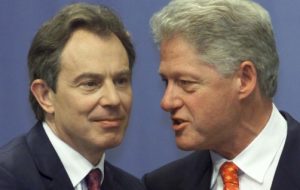
While bearing the brunt of snatching Europe’s folie de grandeur from outright defeat, the US is unlikely again to sacrifice its military power in large quantities and at massive expense for a cause that has little political significance at home. The profound implications this carries for the future of transatlantic relations was shown following NATO’s summit by President Clinton’s readiness to use Russia to clinch an outcome the British in particular found unacceptable. In turn, the President pointedly told Prime Minister Blair to stop rocking the boat.[Clinton, 1999; Chernomyrdin, 1999; Blair, 1999]
Russia has been moved to angry opposition. Its elites feel threatened by the enlargement of NATO. This will affect its domestic politics and international conduct in Europe and in other regions. Yeltsin’s capacity to influence his own succession is reduced. Nationalism increases. Military influences in foreign relations grow. Collaboration with the west is cramped. There will be a renewed search for distinctive interests in the Balkans, the Middle East, Central Asia and other regions.
Collaboration with China, Iran, Iraq and other states opposed to the western-global international order will be less accessible to influence. Loans from the IMF will not affect that. [Gobarev, 1999; Lieven, 1999]
The Balkans have been seriously destabilised. The genie of great-Albanian nationalism is out of the bottle.[Hibbert, 1999] Twelve million Serbs and whatever government they live under in future will enter a stage of socio-economic and political alienation. Serbian national opposition to America and NATO will increase. No ‘puppet regime’ is likely to endure in Belgrade. This vanquishes a central if unstated goal of US strategy towards Serbia, to subject its independence to the western powers.
Estimated military costs of the war so far range upwards from $10 billion. Economic damage and loss of trade may amount to as much again. Long-term reconstruction in the region, if the EU carries through on its recently stated aim, is thought to require $30 billion. These costs will mean the sacrifice of other economic and social goals in NATO countries. Hence having destroyed Serbia, if it comes to that, the western powers must promptly rebuild it, and the region. Otherwise there will be a further twist to the development gulf that has turned low levels of living in so many Balkan countries into proximate causes of ethnic nationalist hatred and war.[IISS, 1999d]
By attacking Serbia and making its strategic aim ‘to degrade Milosevic’s capacity to make war’, NATO has become committed to wide-ranging strategic objectives. These have saddled it with bringing the Balkan economies up to west European standards. Arguably this priority should have followed from the Dayton Agreement, and might have avoided the war over Kosovo.[IISS, 1999a: 115, 125]
This monumental task was not part of any vision on 24 March 1999.
Conclusions
The geopolitical aims of the US and its closest allies in the Kosovo war partly pertain to the ‘unfinished business’ of opposing governments deemed ‘renegades’ within the post-cold war international order.
But there is also ‘new business’. This involves several complex strategic issues: The first is whether and how to enlarge NATO’s capabilities as an instrument of collective western security, rather than of collective defence alone. A second involves creating a complimentarity for the EU between CFSP and the military-technical superiority of the world’s only, and lonely, superpower. A third is how promoting a vision of human rights, globalisation and world order might serve as a way of relating ends and means together for an emergent European federation (or superstate).
Lastly, spreading a new doctrine of ‘limited sovereignty’ under the mantle of ‘the new internationalism’ may bypass, or compensate for, some of the bottlenecks of the existing UN system.
Such an ambitious vision illustrates a paradox of morality and strategy, which, if it is not understood and resolved, could destabilise the international system.
NATO’s manifest failure to easily crush a small, weak state, and its increasing disunity over how to respond to that failure, inevitably transmits a psychological message of western weakness to the rest of the world; while the NATO powers and the EU have established a precedent, which suggests that might is right outside the Charter as long as a moral justification can be generated to accompany overwhelming force.
In view of NATO’s unwillingness to go into wars on the ground, the ‘universal’ rights and norms which have been insistently advertised by western leaders, most notably in British foreign policy, are not attainable. The silence of NATO’s new ‘lawgivers’ over the state of human rights in other countries, some in Europe, suggests that these ‘universal’ rights and norms are designed for consumption only in the regional system.
This phenomenon, transferred from US practices analysed by Samuel P. Huntington, may herald the fracturing of a ‘global’ international order into two sub-systems, one dominated by the US and allies, the other their purview.[Huntingdon 1998]
It may also compel America’s European allies to endorse what up to now has been a largely American isolationist doctrine of ‘limited sovereigty’. This conflicts with strong European ‘constitutionalism’.
A localised but still momentous quandary unleashed by NATO’s military action is that Albanians’ vision of a ‘national’ community has been endorsed. For ten years the NATO powers opposed ‘greater Serbia’. Now, through the KLA, they sponsor ‘greater Albania’. This will increase instability in the Balkans.
A moral foreign policy cannot cut into such a political quagmire, imposing what is ‘acceptable’ and what is ‘unacceptable’ conduct for a sovereign state, or for an ethnic minority. A moral argument has to start with a moral principle. Such a principle must show that it can carry towards somewhere that is morally preferable. Such a quest is liable to prove difficult and expensive, and may fail to create a more stable security order in Europe.
The claim that the alliance’s military action was necessary on moral and political grounds cannot be sustained within the present framework of international law. The development of Chapter VII powers is insufficient to deal with difficult humanitarian interventions. Allegations of ‘Genocide’ and claims that what happened after NATO bombing began was ‘the greatest refugee crisis since the Second World War’ sound like moral hype, or straight propaganda.
The only sustainable conjunction between force, politics and ethics remains one formulated by Clausewitz: ‘nobody starts a war, or at least nobody in their right mind ought to start a war, without first knowing what he intends to achieve by it, and how he proposes to fight it’.[Clausewitz 1974]
The UN was created to permanently abate the logic of ‘Clausewitzian’ norms, and above all to obviate the use of war as an instrument of policy by states invoking legal or political ‘necessity’ as a facade for the deadly logic of power politics. In view of the horrendous muddle western leadership is in we can better appreciate the wisdom this entails, and the folly involved in ignoring it.
A workable framework for dealing with humanitarian catastrophes requires a reformed UN Security Council. This demands greater courage from western countries than has been shown so far. Denis Healey wrote ‘Time is the price democracy pays for change’.[Healey, 1989] Since the cold war’s end much has been frittered away, which cannot be made up for by deciding to circumvent the UN when crisis conditions arise.
References
Almond (1999) ‘What the KLA really is’, The Spectator, 3 April.
Binder, David (1987) “Rising ethnic strife brings fears of worse civil conflict”, The New York Times, 1November.
Blair, Tony (1999) Speech at Chicago, 22 April.
Chernomyrdin, Viktor , (1999) ‘Article and statement’, The Washington Post,
26 May.
Clausewitz, C M (1974) On war, (eds & trans M Howard & P Paret), Princeton UP.
Clinton, Bill (1999) White House Press Conference, 28 April.
Gobarev, Viktor (1999) ‘Feeling threatened’, The world today, vol.55-6, pp.16-18.
Guicherd, C (1999) ‘International law and the war in Kosovo’, Survival, vol. 41-2, pp. 19-34.
Healey, Denis (1989) The time of my life, Michael Joseph.
Hibbert, Reginald (1999) ‘Raising the stakes’, The world today, vol. 55-5,
pp.6-7.
Huntington, Samuel P. (1998) Clash of Civilisations
IISS (1998) ‘The Kosovo Liberation Army: down but not out’, vol.4-7, London, International Institute for Strategic Studies.
IHT (1999) International Herald Tribune, 30 April 1999, p.2.
IISS (1999a) Strategic survey 1998/99, London, International Institute forStrategic Studies.
IISS (1999b) ‘The Kosovo Liberation Army’, Strategic comments, vol. 5-4,
London, International Institute for Strategic Studies.
IISS (1999c) Nato’s campaign in Yugoslavia, London, International Institute
for Strategic Studies.
IISS (1999d) ‘The future of the Balkans’, Strategic comments, vol.5-4, London, International Institute for Strategic Studies.
Judah, Tim (1999) ‘Kosovo’s road to war’, Survival, vol. 41-2, pp.5-18.
Klein, Jacques (1999) ‘Stopping the whirlwind’, The world today, vol. 55-6,
London, Royal Institute of International Affairs.
Lieven, A (1999) ‘The weakness of Russian Nationalism’, Survival, vol. 41-2, pp.53-70.
Neville-Jones, Pauline (1999) ‘Milosevic’s view of NATO is not the real one. I don’t think NATO will stop short. Once we had gone to Rambouillet it became a zero-sum game. We will never again deal with Milosevic. There will have to be troops on the ground, NATO led. He will be defeated.’, BBC world —-.
OSCE (1999b) ‘Press release No. 31/99’, www.osce.org/e/docs/presrel/kpr31-99.html .
OSCE (1999c)
Stone, Norman (1999) “Two cheers for Colonel Tony Benn”, The Times, 26 March.
Roberts, Adam (1999) ‘Willing the end but not the means’, The World Today,
vol.55-5, pp.8-12.
Steele, Jonathan [1999] An interview broadcast on CNN, 27 April. The Times (London) (1999a), ——————-
The Times (London) (1999b), ——————-
The Times (London) (1999c), 26 May, p.5.
US (1999a) ‘Statement by the co-chairs of the contact group, released following peace conference in Rambouillet, France, March 19, 1999’, www.state.gov/www/regions/eur/stm_990319_rambou.html .
US (1999b) State department briefing by spokesman James Rubin, 27 April.
Weller, Marc (1999) ‘The Rambouillet conference on Kosovo’, International
Affairs, vol.75-2, pp.211-251.